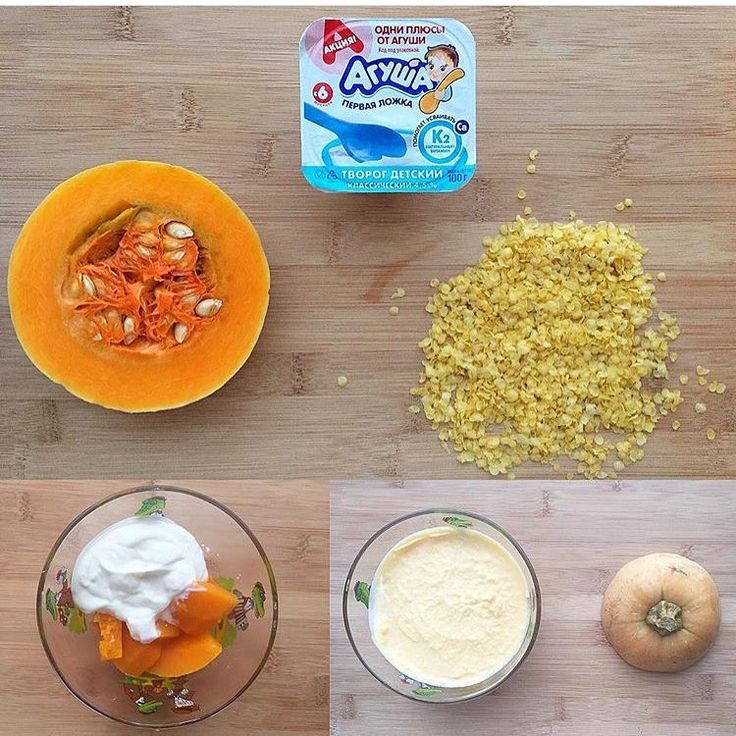How to stretch baby feeds
6 ways to help your baby sleep through the night
Photo: Stocksy
We’ve all felt envious—or annoyed—listening to that mom brag about how well her baby sleeps. Tales of little ones babies sleeping through the night were literally the stuff dreams were made of for Beaumont, Alta., mom Nicole Benes.
“I couldn’t even attend mom groups because Faith would be the baby crying inconsolably while the others napped. I was exhausted,” she says. Faith, now three, wasn’t what you’d call a good sleeper—at least not at first.
Experts say that, physiologically, babies are capable of sleeping in five to six hour stretches by as early as three months old. By then, they don’t need to feed as frequently, and their circadian rhythm (the internal clock that regulates sleeping and waking) is kicking in. According to the Canadian Paediatric Society, by between six and 12 months babies don’t need to be fed if they wake midway through the night, which means more uninterrupted sleep for both of you.
However, babies don’t read textbooks.
“These are general guidelines—every baby is an individual so it’s difficult to say when exactly she will start sleeping better at night,” says Calgary paediatrician Peter Nieman. “Many factors can disrupt or delay this progression.” Your baby could wake some nights due to a growth spurt, upset tummy or teething, and many babies don't sleep through the night until closer to their first birthdays.
While there are no guarantees, we’ve rounded up a few expert-approved, tried-and-true tricks that can help everyone catch a little more shut-eye.
1. Put your baby down drowsy
“Instead of waiting until she’s out, put her down when she’s almost asleep,” says Nieman. Learning to fall asleep on their own is essential to helping little ones snooze for longer stretches. That’s because when they rouse and notice things aren’t the same as when they drifted off (like that they’re no longer cradled in your arms) they’re likely to get confused and upset.
Little ones sleep in short cycles of about 40 minutes, which means they stir frequently during the night. Give her a few moments to settle on her own. If that doesn’t work and you need to attend to her, try another method of comfort rather than offering the breast or bottle right away. Soft singing or rubbing her belly might be all it takes to soothe her back to dreamland.
3. Create a bedtime routine
By four months, babies can benefit from an evening ritual. “They’ll get accustomed to cues and it will make bedtime easier in the months, even years, ahead,” says Nieman. A bath, a story, soft music and dim lighting are elements many parents use with success.
4. Stretch out night feedings
Newborns need to feed every two to three hours, but she’ll slowly stretch out the time between feedings. Use this shift to your advantage by offering a feeding right before you go to bed so you know she’s full when your head hits the pillow.
5. Don’t rush into solids
Parents used to start solids pretty early, thinking that if their baby was extra full, there’d be less chance she’d wake in the night. But serving up solids too soon can actually hinder sleep, potentially triggering food allergies and gastrointestinal issues. According to the Canadian Paediatric Society, babies aren’t ready for solids until the six-month mark, and there’s no research linking the start of solid foods to better sleep.
Follow baby’s cues about sleep
“What I’ve learned over the years is that parents do best when they follow the baby’s schedule, not the other way around,” says Nieman. Note feedings and sleep times to help tease out your baby’s patterns. Things clicked for Benes when she started watching for her daughter’s sleep cues, like rubbing her eyes and yawning, which helped her decipher the right nap and bed times. “As soon as I figured that out, I could plan my whole schedule around it. ”
”
How To Get Your Baby to Sleep Longer Stretches at Night
When you are in the throws of the newborn days, it feels like an eternity since you last slept well. Knowing how to get your baby to sleep longer stretches at night can feel like a far-off dream.
The rest of the world looks back at the last month and wonders where the time has gone while you look back and feel like the last month has taken as long as the previous decade to pass.
However, there are some simple things you can do to help your baby at least sleep for longer stretches at night while you wait to hit the glorious time of baby sleeping through the night.
Here are some top tips on how to stretch night feedings and get your baby sleeping longer!
How to Get Your Baby to Sleep at Night: Do a Dreamfeed
A dreamfeed is a feeding in the late evening. If you’re looking for ways to stretch out a night feed, this is one of the big ones.
The idea is you feed baby one last time before you head off to bed, which then leaves baby not needing another feeding for a longer portion of your night sleep.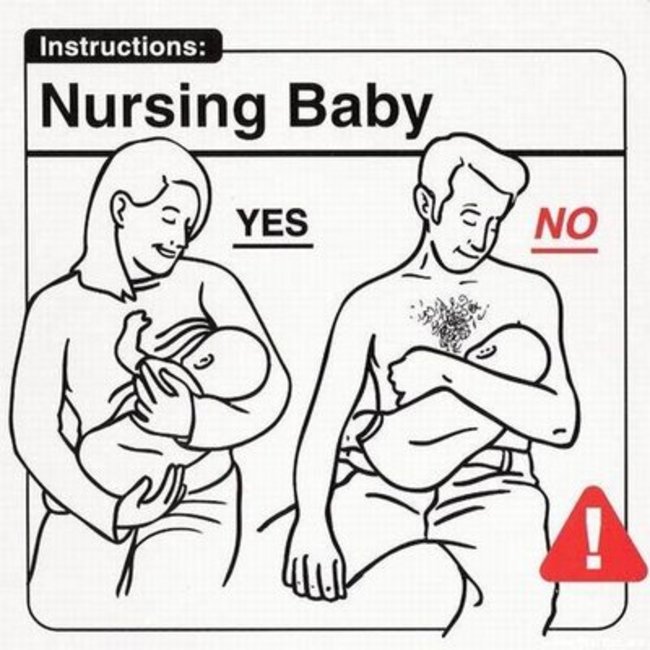
For your baby, the dreamfeed is a night feeding. Bedtime will have happened around 7-8 PM.
The dreamfeed will happen between 10-11 PM in most cases.
So your baby is down for the night. You do not work to wake your baby up. You do not play with or interact with your baby. Your goal is simply to feed.
You do want the feeding to be a full feeding, but not one where baby is fully rousing out of that nice night slumber.
You can read my Dreamfeed FAQs post to get all of your dreamfeed questions answered.
The dreamfeed is a fabulous way to get baby sleeping longer stretches at night. It isn’t always easy. It doesn’t click quickly for every baby.
There are even some babies who do not respond to it well at all.
For me, it often took a lot of work to get it established, but I was willing to put in that effort in order to get my baby sleeping for my night sleep.
The dreamfeed is a great tool, but cannot be used forever. Read my post When to Stop the Dreamfeed to know how long you can go with it.
How to Get Your Baby to Sleep Longer: Cluster Feed
Cluster feeding is another great method for stretching night feeds and getting baby to sleep longer stretches at night.
Cluster feeding is grouping your evening feedings together to kind of “tank up” your baby in preparation for going a longer stretch at night without food. Cluster feeding is for a few feedings in the evening.
The dreamfeed can be included in the cluster feeding.
For example, you might feed at 6 PM, 8 PM, and 10 PM. You might even do 4, 6, 8, and 10.
Cluster feeding is a great way to work in an extra feeding into your baby’s day so fewer feedings will be needed at night, upping the chances of baby sleeping longer stretches.
Just like the dreamfeed, not all babies respond well to cluster feeding.
Many will not do both, but will only do one or the other. If you have to choose, the dreamfeed is preferable to cluster feeding, but cluster feeding is better than nothing if your baby won’t dreamfeed.
See my post on cluster feeding to learn more about how this can help your baby sleep longer stretches at night.
Follow an Eat/Wake/Sleep Cycle
A daily routine where your baby eats, then has playtime, then sleeps is a super solid way to get baby sleeping better not only at night but in the day for naps as well.
This is the basic foundation for so many popular parenting theories out there, including Babywise and the Baby Whisperer.
Starting with your first feed of the daytime, you feed baby, try for some time awake, and then put baby down awake for nap or bedtime.
You repeat this for all of your daytime feedings. Once you hit bedtime around 7-8 PM, you no longer go for this pattern for feedings.
The dreamfeed is not an eat, wake, sleep cycle. It is just an eat, sleep cycle. You want to keep night sleep sleepy and not interactive.
Read: Why an Eat/Wake/Sleep Cycle Works to Get Baby Sleeping
Sleep Train Your Baby
A key step in getting your baby to sleep longer stretches at night is to sleep train your baby.
Your baby needs to know how to put himself back to sleep once he wakes up.
The baby sleep cycle flows in such a manner that the baby will shift sleep cycles about every 45 minutes. At that transition point, baby is very easy to wake up.
If your baby is able to self-soothe, those transitions will happen with baby slipping into the next sleep cycle unless baby really needs something.
If baby is not able to self-soothe, you never know what baby will do. If baby rouses enough, baby will need your help to get back to sleep.
So if you want longer stretches at night, you need baby to be able to self-soothe. Sleep training can be simple and gentle. Read my method for gentle sleep training that is no- cry here.
Wait 10-15 Minutes at Night
When your baby wakes in the night, it is wise to wait 10-15 minutes to get baby up and feed baby unless you know it is time to get baby for a feeding.
If it is not quite time, wait about 10-15 minutes to see if baby resettles herself.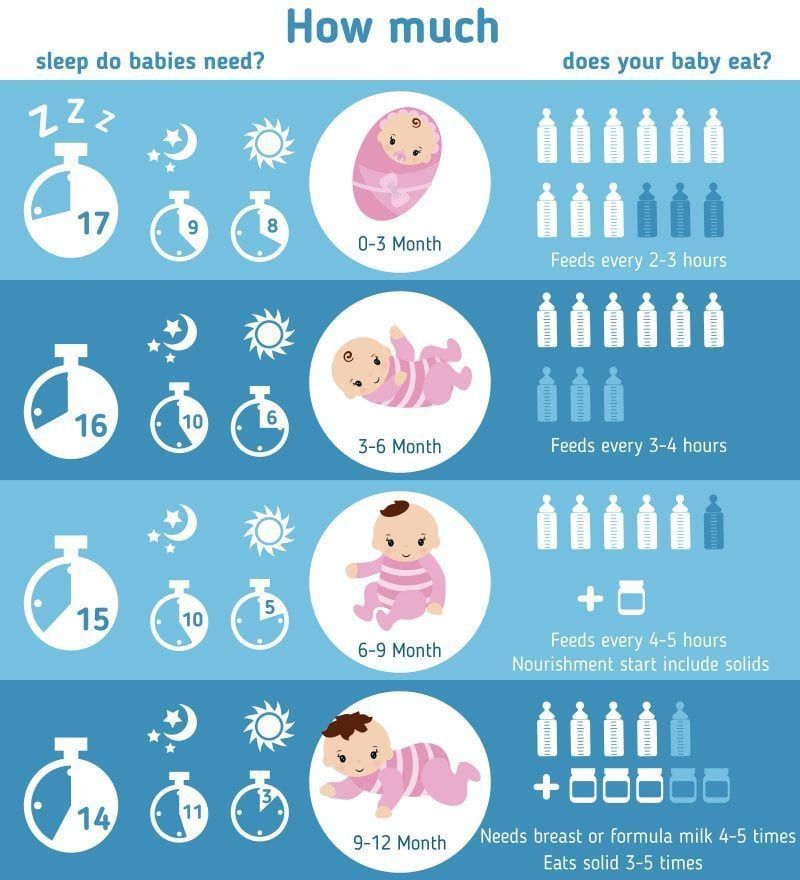
Babies are noisy at night. You might find that baby is actually asleep and noisily transitioning when you rush into the room.
That is why waiting a bit is so helpful–baby might not actually even be awake.
As you wait and baby goes back to sleep, your baby will wake less in the night over time.
Only wait if you think baby might not need to be fed at the time. If you have a three week old who hasn’t eaten for five hours, go feed baby. Do not wait. But if they’re older, a lot of times you can stretch the time between night feedings simply by waiting for them to fall back asleep.
Get Help from Your Spouse
If none of these are getting you the stretch of sleep you need yet, enlist the help of your spouse.
Pump some milk before you go to bed so your spouse can get up one time with the baby to get you a longer stretch of night sleep.
This will help you immensely and will help you have more patience as you wait for your baby to get longer stretches at night herself.
How to Get Your Baby to Sleep Longer Stretches: Conclusion
These tips will help stretch newborn feedings and get baby sleeping longer so you can get more sleep yourself. You might use just one trick or you might use all six. Here is to a better night’s sleep!
More Posts You May Find Helpful:
Val blogs over at Chronicles of a Babywise Mom and is a mother of four and THE Babywise PRO. Check out her blog for all things sleep training.
Peculiarities of a newborn's digestion - what a mother needs to know
HOW THE DIGESTIVE ORGANS OF NEWBORN DEVELOP
— Ekaterina Andreevna, how is the digestive system of a newborn?
- The digestive system of a newborn is anatomically similar to the digestive system of an adult - it has exactly the same organs. The only difference is that most of them are not mature enough at the time of birth. nine0005
Consider some features of the digestion of newborns:
- the volume of the stomach is very small - at birth about 7 ml, by the tenth day - up to 70 ml, by the year - up to 250 ml, so in the first days the child has enough colostrum, then gradually the amount of food is increased;
- Cardiac gastric sphincter immature - causes regurgitation; with age they decrease and, as a rule, after six months or sometimes closer to a year they disappear completely; nine0020
- immature secretory function — therefore, the stomach is not sufficiently acidic, and this reduces the bactericidal properties of digestion — bacteria survive, the risk of developing viral and bacterial intestinal infections is higher;
- the pancreas practically does not secrete lipase - all lipase is found in breast milk, so the child may have problems digesting a mixture of whole cow's milk: the body simply cannot break down this fat; nine0020
- Ideally, in the first minutes, the baby should be attached to the breast - then his organs will be able to populate with microorganisms that are excreted with colostrum and normal female microflora.
 Children after caesarean section are applied to the chest until the start of antibiotic therapy.
Children after caesarean section are applied to the chest until the start of antibiotic therapy.
Table. Norms and problems of digestion in infants
— Ekaterina Andreevna, baby's chair changes with age. How do the intestines of the baby, its functional features affect the process of defecation? nine0008
- The rectum is also immature at birth and matures only by the age of three. This is the reason for the peculiarities of the stool of young children. They cannot control the process, especially in the first months, when bowel movements occur after each feeding. As the rectum and anus mature, the stool becomes less frequent because the child can hold it. After a year and a half, when the nervous and digestive systems are formed, the child will be able to empty the intestines at will. nine0005
— Does the digestion of a newborn baby depend on the type of feeding?
— As we already know, children of the first six months of life have a relative immaturity of the digestive organs and enzymatic systems, so they need special nutrition — breast milk or an adapted mixture. Cow's milk, goat's milk, kefir are absolutely not suitable. Solid foods begin to be given to babies by the age of four to six months, when the pancreas and small intestines mature and the child can already digest and assimilate everything. nine0005
Cow's milk, goat's milk, kefir are absolutely not suitable. Solid foods begin to be given to babies by the age of four to six months, when the pancreas and small intestines mature and the child can already digest and assimilate everything. nine0005
— Breastfeeding favors the formation of microbiota, improves digestion of food. How does formula milk affect a baby's digestion?
- With the introduction of the mixture, the baby's digestive system is forced to mature faster than when breastfed. Since the newborn does not have the lipase enzyme that breaks down milk fat, the mixture is harder to digest at first, but gradually the pancreas matures and allows this component to be digested. nine0005
What you need to know about the stool of a formula-fed newborn
— Is it possible to distinguish age-related intestinal problems in infants from infection?
- Food infection is always an acute condition. The child may begin vomiting, he stops eating, cries and is naughty. Because of the disease, young children become weak, cannot breastfeed, sleep constantly or sleep more than usual.
Because of the disease, young children become weak, cannot breastfeed, sleep constantly or sleep more than usual.
Inflammation and surgical pathology of the intestines (intussusception) are accompanied by very sharp piercing crying - for an hour no one can calm the child down. nine0005
HOW TO IMPROVE DIGESTION IN A BABY
— Is it possible to alleviate the condition of a child with pain in the tummy?
— Medications for age-related transient changes act more like a placebo. Therefore, it is not necessary to give medicines to a child if the doctor has established lactase deficiency or other disorders associated with the immaturity of the baby's digestive system.
When breastfeeding, more frequent breastfeeding will help. If the breaks are very long, the baby gets a lot of foremilk with a significant amount of carbohydrates (lactose). Due to the lack of enzymes to break them down, abdominal pain may increase. Therefore, it is recommended to breastfeed the baby as often as possible so that he receives foremilk and hindmilk evenly.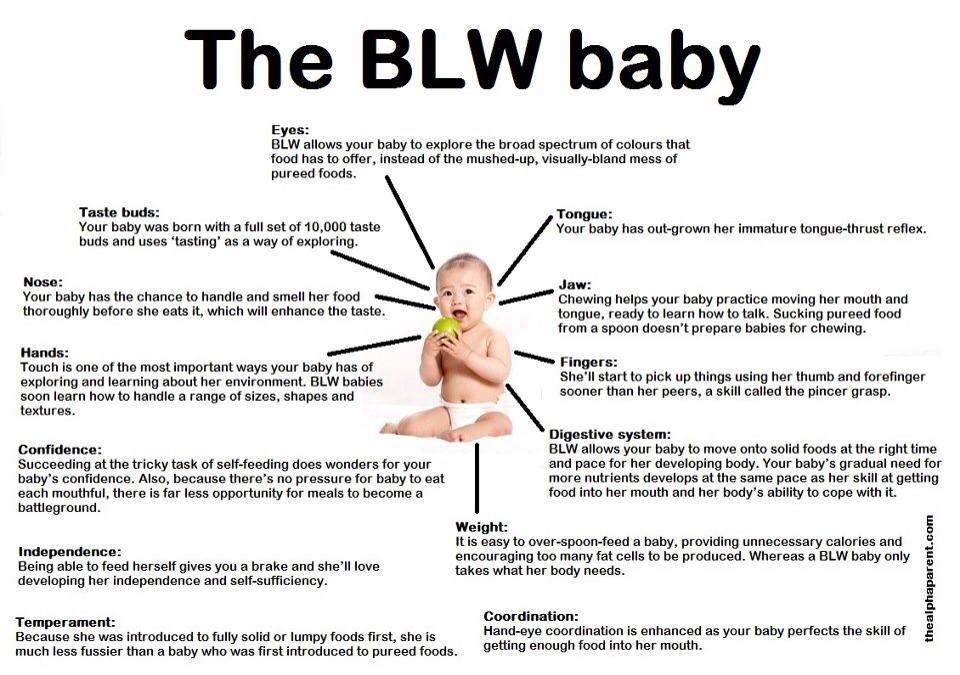 nine0005
nine0005
A good way to prevent gas and improve bowel function is to lay babies on their stomach from the first days of life. It is advisable to put the child on a hard surface and always be nearby so that he does not bury himself in a pillow, blanket.
“Even children with an unhealed navel can be safely laid out on their stomach. This strengthens the abdominal muscles well and helps the discharge of gases.
Massage, gymnastics, heating pads act as a distraction, so after them the children cry less. Mom's warmth, laying "skin to skin" on the mother's stomach help the baby calm down and more easily adapt to extrauterine life. nine0005
— When does a baby's digestion improve?
— Digestion is best aided by on-demand breastfeeding.
- In the first months, the mother may feel that the baby is constantly hanging on her breast. It turns out one continuous feeding, which flows into sleep - while not all children have the concept of night: many are awake at night, as during the day.
 This period just needs to be experienced.
This period just needs to be experienced. - By the age of three or four months, children themselves begin to build a kind of regime - more conscious intervals between feedings, wakefulness and sleep time appear. It gets easier.
- As for the diet for mom, the main recommendation is to adhere to the norms of proper nutrition, give up alcohol, fast food, dyes, preservatives. Many breastfeeding mothers have to limit or eliminate cow's milk protein, a common cause of allergies in infants. nine0020
Hanging on the chest is often associated with the stage of adaptation. The child has just been born, he has not yet learned to live in the external environment, he wants more mother's warmth, he longs to be constantly on the arms, at the chest. This period is also called the fourth trimester of pregnancy - the first three months of a child's life all the time you need to be close to your mother. nine0005
— What to do if the question arises of transferring a child to artificial feeding?
- It is better to transfer to artificial feeding smoothly - start with 30 ml of the mixture and gradually increase its amount over ten days. In this case, as with an emergency transfer, the main thing is to make sure that the child does not have an obvious allergic reaction to the mixture.
In this case, as with an emergency transfer, the main thing is to make sure that the child does not have an obvious allergic reaction to the mixture.
“The baby needs 2-3 weeks to adapt to a new diet. At this time, there may be violations of the stool, mild pain in the abdomen. If the baby does not show signs of allergy, there is no point in switching to another mixture. nine0005
An adapted mixture is selected together with the doctor. For the digestion of a newborn, nutritional components such as prebiotics and probiotics are useful. Palm oil, on the contrary, complicates the digestive processes.
A child with a predisposition to cow's milk protein allergy (when the allergy has not yet been identified, but has a history of relatives) can be given goat's milk-based formulas such as MAMAKO ® Premium. These are highly adapted palm oil free blends with an optimal content of casein and whey proteins. At the same time, goat's milk has a protective effect on the mucous membrane of the gastrointestinal tract, therefore it is considered a better choice than cow's milk. nine0005
nine0005
You should urgently consult a doctor if your child has:
- vomiting in a fountain or in large quantities;
- blood and mucus in stool;
- acute pain in the abdomen, which is accompanied by uncharacteristic crying;
- weakness, lack of appetite and at the same time too long sleep.
The digestive system of a newborn is quite immature despite the fact that it does not differ anatomically from the digestive system of an adult. Therefore, in children of the first half of life, hiccups, regurgitation, and colic often occur. It is important to calm down here, because during the maturation of the gastrointestinal tract, most children go through these problems with slightly more or less pronounced manifestations. However, if your child's condition and behavior are noticeably different from normal, you should visit a doctor. nine0005
* Breast milk is the best food for babies. WHO recommends exclusive breastfeeding for the first 6 months of a child's life and continued breastfeeding after complementary foods are introduced until the age of 2 years. Before introducing new products into the baby's diet, you should consult with a specialist. The material is for informational purposes and cannot replace the advice of a healthcare professional. For feeding children from birth. The product is certified.
Before introducing new products into the baby's diet, you should consult with a specialist. The material is for informational purposes and cannot replace the advice of a healthcare professional. For feeding children from birth. The product is certified.
what to do at home
We share ways that will help restore the original look of clothes after they have shrunk as a result of washing.
Contents of the article
You pull your favorite T-shirt or turtleneck out of the washing machine, and now it is more suitable for a lanky teenager than an adult. This problem is familiar to each of us. But there are a few tricks that will save things that have sat down after washing.
The thing has shrunk after washing - what should I do? nine0004
Most often, shrinkage occurs due to a violation of the required washing regime. Allegedly in order to more effectively clean the item of clothing, we set the water temperature too high and use unsuitable detergents. And you just need to read the information on the label. But if the fiasco did happen, try to stretch things that sat down, following our recommendations.
And you just need to read the information on the label. But if the fiasco did happen, try to stretch things that sat down, following our recommendations.
Use baby soap
Take baby soap or shampoo and knead wet clothes from any fabric with your hands to the desired state. Then gently rinse the item, but do not wring it out. And remember, as soon as you wash your shrunken clothes in the washing machine again, they will return to a reduced state. nine0005
Use hair conditioner and jars
Is it possible to stretch a shrunken item with hair conditioner and jars that you have not yet used for preservation? Of course yes. We use them to restore shirts, T-shirts and other small items made of cotton. Shrunken items should be soaked for five minutes in a warm solution of three tablespoons of conditioner. Then rinse and lay out the item on a flat surface until it reaches the desired size. Why banks? It's simple - they are needed to fix a piece of clothing in the process of natural drying. nine0005
Why banks? It's simple - they are needed to fix a piece of clothing in the process of natural drying. nine0005
Just put on your jeans
After washing, your favorite jeans have obviously become smaller as soon as they were pulled out of the drum, but you can pull out a shrunken item in an elementary way. First, put on your pants (although it will be difficult) and sit in them in a warm bath for about 15 minutes, then dry them without taking them off. The last step is to walk around in jeans for an hour after that.
How to stretch a shrunken cotton garment
Method 1: with a towel
A simple method will allow you to stretch a shrunken cotton item as much as possible (but not more than the original size). Natural fabric lends itself most easily to such transformations. After a gentle hand wash, wait for the clothes to dry and then lay them on a flat surface and a towel.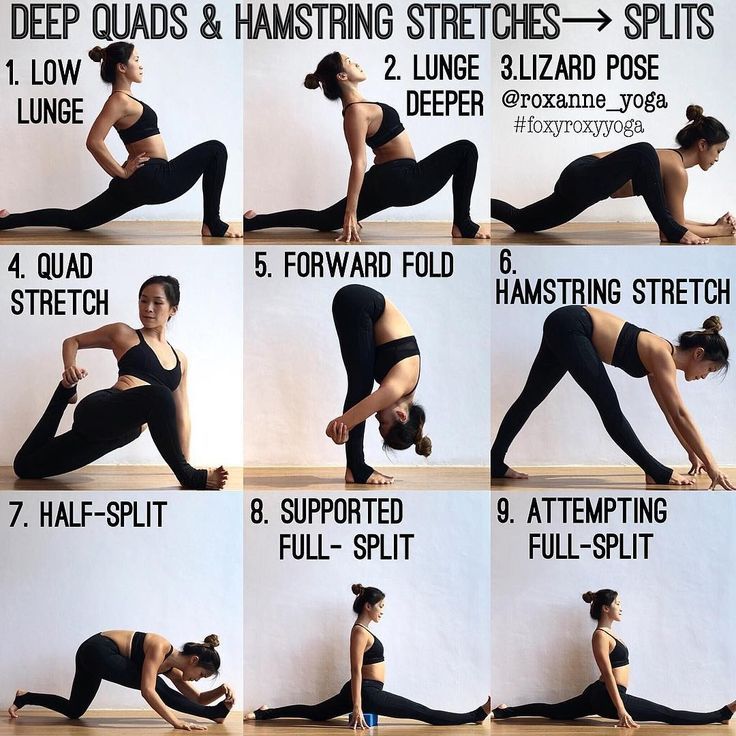 Next, roll the product together with the towel into a tube and gently press the wrapped terry cloth. After most of the moisture from the T-shirt has been absorbed, unfold the towel. At the end - on the same surface, gently stretch the cotton product to the ideal size. nine0005
Next, roll the product together with the towel into a tube and gently press the wrapped terry cloth. After most of the moisture from the T-shirt has been absorbed, unfold the towel. At the end - on the same surface, gently stretch the cotton product to the ideal size. nine0005
Method 2: soaking
What could be easier than soaking the item in cold water for 20-25 minutes, then stretching as far as needed and leaving it to dry flat? Meanwhile, this option is very effective, despite its simplicity, and gives the opportunity to stretch clothes that have shrunken after washing.
Method 3: with baby shampoo
This method will show you how to stretch a thing that has shrunk with inexpensive cosmetic products. Fill a basin with warm water and dilute some baby shampoo or hair conditioner in it. Put a shrunken cotton item into the solution for 10 minutes to make the material more elastic. Drain the water and gently wring out the fabric without stretching it. You don't need to rinse the thing! Instead, lay it on a terry towel directly in this form. The towel must be rolled up to remove any remaining moisture. Then put the thing on a dry towel and gently stretch it with your hands to the desired size, leave to dry. nine0005
Drain the water and gently wring out the fabric without stretching it. You don't need to rinse the thing! Instead, lay it on a terry towel directly in this form. The towel must be rolled up to remove any remaining moisture. Then put the thing on a dry towel and gently stretch it with your hands to the desired size, leave to dry. nine0005
Method 4: Vinegar
A shrunken garment can be restored with vinegar. Take three percent vinegar and apply it to the fabric with a sponge, leave the thing to dry on a hanger.
Method 5: ammonia
Since it is easier to stretch a shrunken cotton garment than it is with other types of materials, there are many options for this task. One of them involves the preparation of a special solution. Dilute in water at a temperature of about 30 degrees three tablespoons of ammonia, one tablespoon of vodka and the same amount of turpentine. Soak a piece of cotton in this mixture for half an hour, then rinse in cool water and spread on a flat horizontal surface, laying a towel. While the thing is drying, periodically stretch it with your hands. nine0005
While the thing is drying, periodically stretch it with your hands. nine0005
Method 6: with milk
Stretching a shrunken cotton item after washing can also be done using this affordable drink. If the clothes are white cotton, soak them in milk. To do this, mix it with warm water and put clothes in the solution for half an hour, then rinse in cool water. Leave the product to dry on a towel, stretching the fabric from time to time.
Method 7: take a shower
When Ippolit from the famous Soviet comedy climbed under the shower in his coat, perhaps he just wanted to stretch the clothes that had shrunk after washing. Jokes aside, this paragraph is very simple and practical. Stand under a hot shower in your things. While you are taking water procedures, gently pull the fabric in different directions. nine0005
What to do if woolen clothes shrink after washing
Method 1: soak with vinegar
Wool fibers are covered with keratinized scales, in hot water they fluff up and interlock like Velcro fasteners. As a result, the size of the clothes decreases. Is it possible to stretch a shrunken woolen thing after this? Yes, we have safe options in stock. First, fill a bowl with warm water and add 1-2 tablespoons per liter of vinegar or sodium borate. Soak the thing in the solution, and in the process periodically stretch the material under water. After 30 minutes, gently wring out excess water and wrap the sweater in a towel just like you did with cotton. nine0005
As a result, the size of the clothes decreases. Is it possible to stretch a shrunken woolen thing after this? Yes, we have safe options in stock. First, fill a bowl with warm water and add 1-2 tablespoons per liter of vinegar or sodium borate. Soak the thing in the solution, and in the process periodically stretch the material under water. After 30 minutes, gently wring out excess water and wrap the sweater in a towel just like you did with cotton. nine0005
Method 2: cold water
If the wool has shrunken, remember the method of stretching it properly. Wet the top of the sweater with cold water using a dispenser and place it on a towel. Then stretch your shoulders up and fix them with a book. Leave the structure in a cool place and do not touch it all night. The next day, an expensive wool item will return to your wardrobe.
Method 3: with a coat hanger
If woollens have shrunken, sometimes a simple action helps.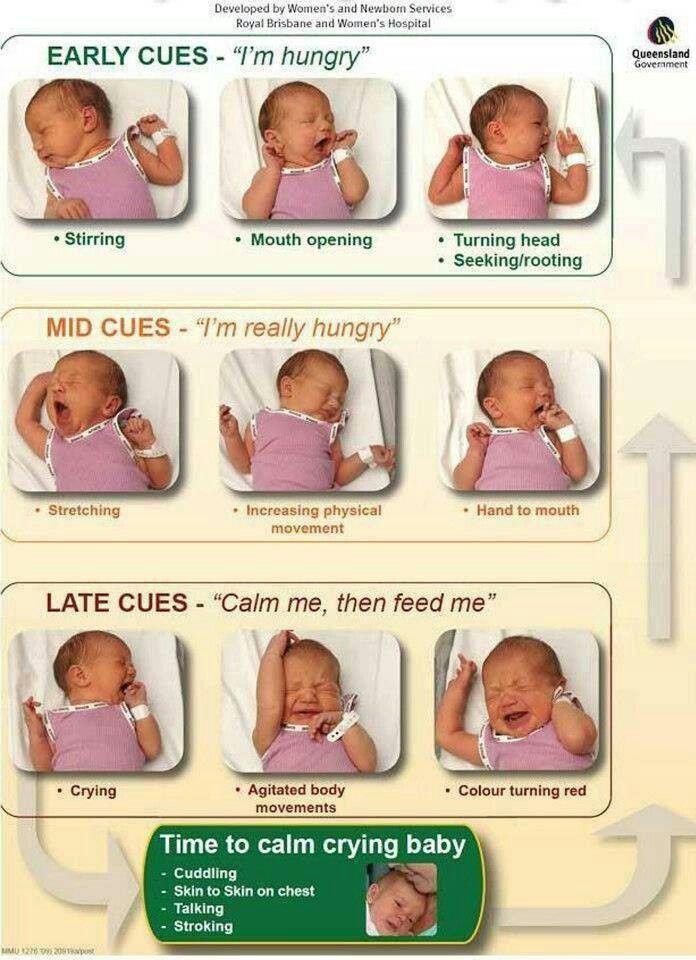 You need to rinse the product in warm water and then hang it on a hanger. Under the weight of water, the fabric will stretch. However, during the drying process, it is worth monitoring the condition of the thing. So that it does not stretch excessively, periodically wring out excess moisture. nine0005
You need to rinse the product in warm water and then hang it on a hanger. Under the weight of water, the fabric will stretch. However, during the drying process, it is worth monitoring the condition of the thing. So that it does not stretch excessively, periodically wring out excess moisture. nine0005
Method 4: thread and needle
This method reveals the secret of how to stretch a shrunken wool garment after washing with thread and a needle. It is similar to the previous one, only a wet piece of clothing is not hung up, but laid out on a large piece of dense fabric. Then the edges of the product must be aligned with the edges of the fabric, sewn together and left to dry completely.
Method 5: hydrogen peroxide
Fill a bowl with cold water and dilute two tablespoons of hydrogen peroxide in it. A shrunken woolen item must be rinsed in the resulting solution, and then soaked for two hours. After the specified time, remove the item, spread it on a terry towel and leave to dry. Periodically come up and stretch the fabric with your hands, but not too much. nine0005
After the specified time, remove the item, spread it on a terry towel and leave to dry. Periodically come up and stretch the fabric with your hands, but not too much. nine0005
Method 6: using cologne and more
We also have a more sophisticated option, how to stretch things that have shrunk after washing. But it’s quite functional, as long as you have the right ingredients. Prepare a solution of five liters of water at room temperature, three tablespoons of ammonia, one tablespoon of turpentine and one tablespoon of cologne. Mix everything well and soak a woolen item in the liquid for an hour. Then take out the product, rinse in cold water and leave to dry naturally. nine0005
Method 7: with an iron
If the woolen item has changed a little, steaming with an iron will help. Set the iron to a low temperature and steam the material. This method can be applied both on the entire area of the product, and on individual parts of a shrunken thing that needs to be stretched.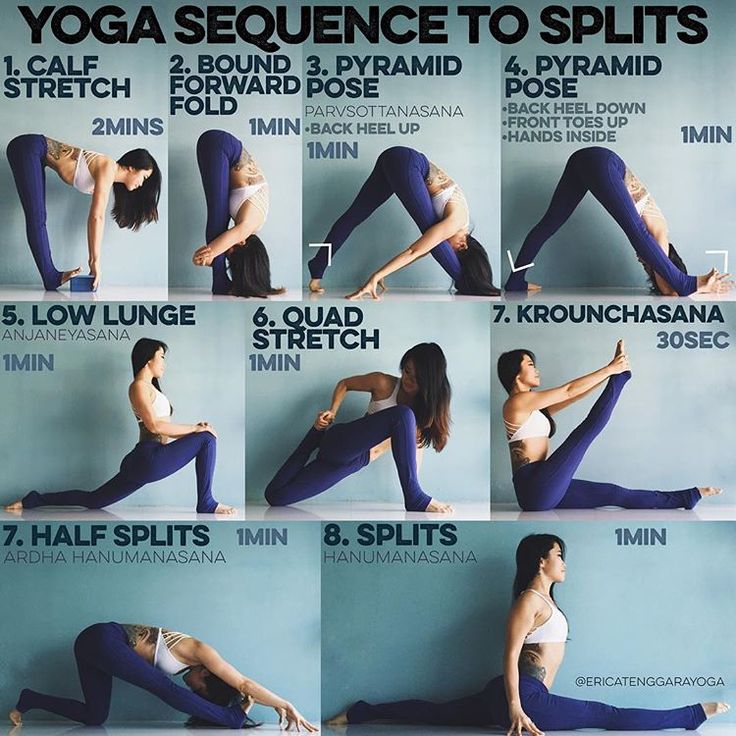
How to stretch a shrunken item made of synthetic fabric
Method 1: using shampoo
If a thing made of rayon or polyester has shrunk, we list the options for stretching it. The first shrinkage method is similar to the cotton recovery process. Add a tablespoon of shampoo or conditioner to 1 liter of warm water in a deep container. Synthetic fabric should be soaked for no more than 15-20 minutes. Then take the thing out of the water, but in no case do not squeeze it out - the fabric is very sensitive. Start the stretching process while the clothes are still damp enough. Repeat the operation with twisting in a towel until the fabric is completely dry. nine0005
Method 2: cold water
If the item is a cotton/synthetic blend, this simple method will work. To restore a thing that has shrunken after washing, soak it for 15 minutes in cold water, and then wash it in the machine on a delicate cycle. Hang clothes to dry on soft hangers, stretching them with your hands from time to time.
Hang clothes to dry on soft hangers, stretching them with your hands from time to time.
Method 3: with fabric softener
An acrylic item can be stretched with fabric softener. Place the clothes in water with rinse aid diluted in it for 15 minutes, then straighten it on a horizontal surface and stretch it with your hands. nine0005
Method 4: grated soap
Both modern industrial compositions and the "grandmother's" method can help stretch a shrunken viscose item. Prepare a solution of grated soap, three tablespoons of alcohol, one tablespoon of resin - and dilute it all with water. Clothes need to be soaked for a day, then stretched and dried.
How to wash clothes so that they do not shrink?
In order not to have to think about how to stretch a cotton, woolen or synthetic thing that has shrunk, you should remember the basic rules. Their observance will help to preserve the look of your favorite products for a long time. nine0005
Their observance will help to preserve the look of your favorite products for a long time. nine0005
Rule 1 - read labels
Obviously, not everyone follows this rule. But in vain. It is the label on the clothes that will tell you how to properly care for each individual item.
Rule 2 - do not wash in hot water
New clothes, especially bright ones, that you wash in hot water, even if they do not shrink, they will definitely lose their color saturation. Stretching things that have sat down is somewhat more difficult than caring for it. If you do not want to make an expensive or favorite product shapeless, just reduce the washing temperature. nine0005
Rule 3 - Don't overload your washing machine
Loading your washing machine to capacity not only saves resources, but also damages your clothes. Overloading the washing machine can seriously damage the fabric, including deforming it so that a thing that has shrunken after washing will have to be restored.
Rule 4 - use the right washing cycle
Different cycles are invented for a reason - what is good for sneakers is detrimental to silk blouses. Follow the instructions on the inner tag and set the correct washing mode, otherwise you will get shrunken clothes after it. nine0005
Rule 5 - Avoid tumble drying
Dry your clothes outdoors in the shade. To avoid deformation, use horizontal drying with shape control. You must understand that a thing can suffer not only from improper washing, but also from drying.
How to wash wool so that it doesn't shrink
Even if you know how to stretch a shrunken wool, you can still prevent a problem from occurring. We have collected the most useful life hacks for caring for products made from this material. nine0005
- Read the product label first.
 With this, in general, it is worth starting any manipulations with clothes. According to the label, select the washing mode and temperature.
With this, in general, it is worth starting any manipulations with clothes. According to the label, select the washing mode and temperature. - Check pockets, remove forgotten change, buttons and pieces of paper.
- If there are severe stains, brush them with a dry brush before washing.
- Turn wool garments inside out before washing to avoid pilling.
- If you want to send an item to be washed in the washing machine, it is recommended to sew up the buttonholes so that they do not stretch. nine0020
- If the surface is lint-free, brush the product against lint before washing.
- For woollens, choose special soft detergents with a liquid consistency.
- In the washing machine, set the gentle mode "Wool" or "Delicate wash".
- Switch off the spin cycle or leave it at low speed.
- It is recommended to wash woolen garments in a special bag.
- Wool should not be rubbed hard when hand washed. Movements should be soft, "sweeping".
 nine0020
nine0020 - After washing, lightly wring out the wool, then wrap in a terrycloth and gently press it against a horizontal surface to remove excess moisture.
- Do not dry a woolen item on a radiator or dryer, it is better to leave it to dry at room temperature.
How to wash things made of synthetics so that they do not shrink
In order not to spoil synthetics and not to wonder how best and more accurately to stretch a shrunken thing, you need to follow a certain temperature regime and some special recommendations when washing. nine0005
- Depending on the composition of the fabric, the temperature for washing in the machine varies from 30 to 70 degrees. You can find exact information on the product label.
- Do not rub or twist the fabric when hand washing.
- You can wring products made of artificial fibers in a terry towel, by analogy with wool.
- Sushi synthetics in a horizontal position.




